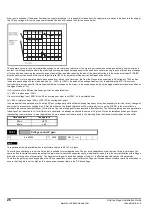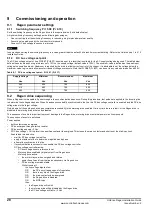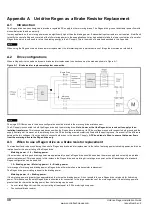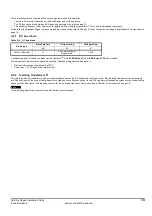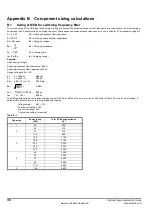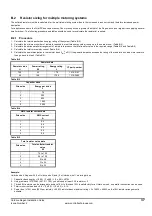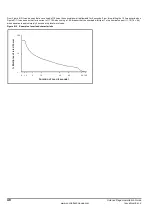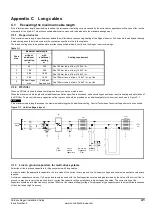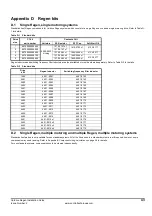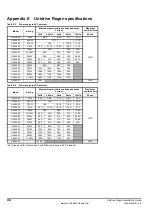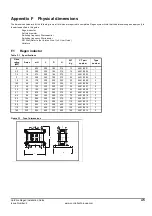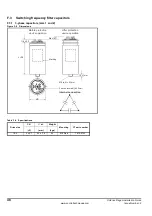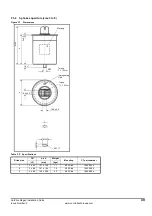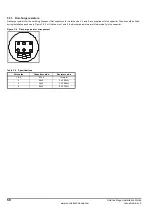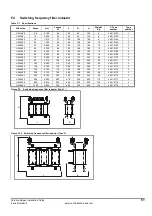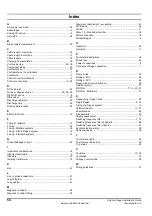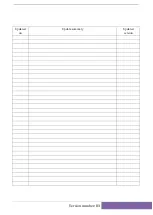
Unidrive Regen Installation Guide
39
Issue Number: 2
www.controltechniques.com
Peak current
Unidrive 5401 x 4, 480Vac 10%, total softstart resistance of 6
Ω (
4 x 24
Ω
in parallel):
I
peak
= Vac(+10%) x 1.414 / Resistance
softstart
(480 + 48) x 1.414 / 6 = 124.08A I
peak
Charging time
Unidrive 5401 x 4, total softstart resistance of 6
Ω
(4 x 24
Ω)
in parallel, and a total DC bus capacitance of 4 x 8,800
µ
F = 35,200
µ
F
T
constant
= Resistance
softstart
x Total Capacitance
DC bus
T
constant
x 5 = T
charge
6 x (35,200 x 10
-6
) x 5 = 1.056sec
Selection
From the above calculations for a peak charging current of 124.08A with a charge time of 1.056sec a magnetic overload with the following
characteristics can be used:
8A nominal rating
O/L = 15.5
Plotting the exponential charging current for the soft start circuit against the trip characteristic curve for the overload will also ensure no spurious
tripping during charging time.
Figure B-2
Example of charging characteristics
Calculating current level on exponential curve
As shown in Figure B-2, after 5 time constants the charging current is approximately zero. In some cases, due to the characteristic of the overload,
the current may have to be calculated after 4 time constants to ensure that the thermal trip area of the overload is not activated. Refer to the following
formula:
I at given Time Constant = Exp [-1 (Time Constants)] x I
peak
The following example calculates the current level after 3 time constants with a peak charging current of 100A:
Exp [-1 (3)] x 100 = 4.97A
B.4.3
Sizing of thermal overload
The thermal overload should be sized to provide protection against a high impedance short circuit. Under this condition the current flowing would not
be high enough to result in the magnetic overload tripping, but the power dissipated would exceed the nominal power rating resulting in heating of the
resistor.
In order to size the thermal overload correctly, the power rating and overload characteristics of the resistor are required. The power characteristic
curve for the resistor should be converted from multiples of power to current in order to size the thermal overload correctly.
√
P / R = ICalculation to convert from power to current
Example:
Assuming a system fault which results in a continuous power of 10 x the nominal power being dissipated by the resistor.
Resistor, 24
Ω
296W
Peak current at power up = 528Vac / 24
Ω
= 22A
Thermal / Magnetic overload current rating = 22A / 20 = 1.1A (use 1.6A)
10 x nominal power = 2.960kW
Current flowing during overload
√
2960 / 24 = 11.01A
25
50
75
100
0
0
1
2
3
4
5
Multiples of Time Constant
%
C
h
a
rg
in
g
C
u
rre
n
t


